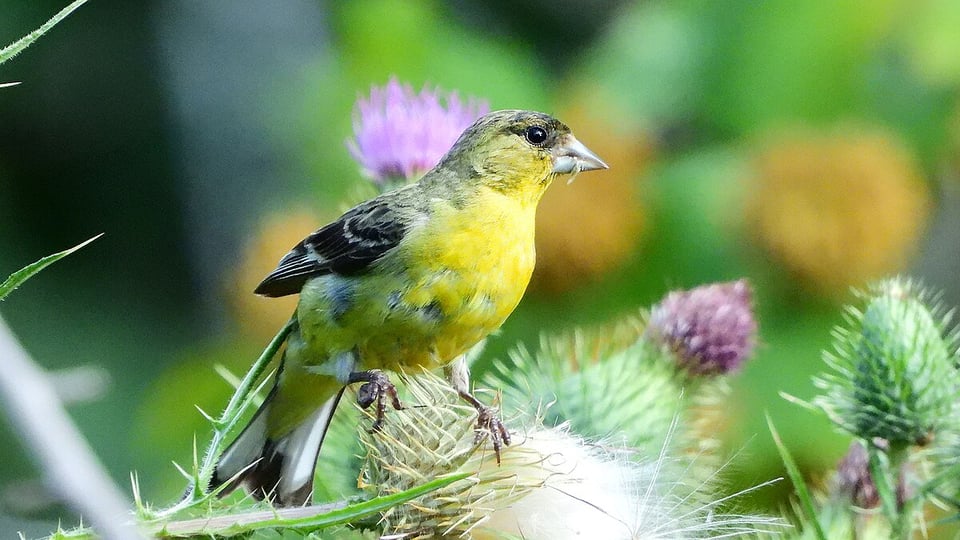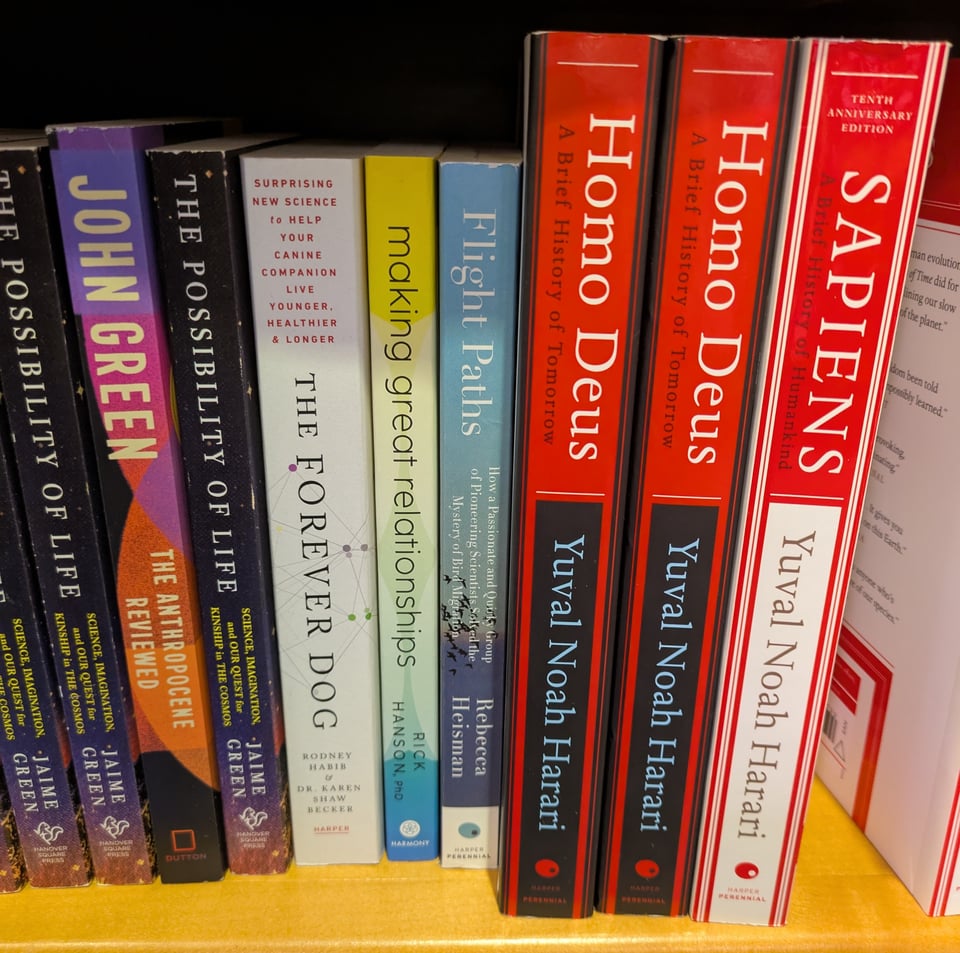Bird of Passage: August 2025
A peak behind the curtain.
On July 3, my first (and hopefully not last!) story for a regional environmental news publication called Columbia Insight went online, about the recent range expansion of lesser goldfinches here in the Pacific Northwest. I had fun writing it, and since I sometimes get asked how exactly I find work as a freelance writer, I thought I might pull back the curtain a bit and detail how this story came to be.
Sometimes editors come to me with assignments, but in this case, I pitched the idea to an editor. I regularly check scientific journals for new bird studies that sound interesting, and around the beginning of May, a paper in the journal Ornithology caught my eye. It was about the reasons behind lesser goldfinches’ expansion into Oregon, Washington, and Idaho, a subject that interested me because lesser goldfinches are a common yard bird for me here in eastern Washington but apparently were fairly new arrivals to the area when I moved here ten years ago.
It’s kind of a niche topic—I wasn’t about to pitch this to Scientific American or anything. But I had recently learned about the existence of Columbia Insight, which specifically covers environmental news in the Columbia Basin region, and I decided that might be worth a shot. So, I wrote up a pitch, an email a few paragraphs long introducing myself and trying to sell an editor on this story as something that might be of interest to their readers. I sent it off, and I waited.
Four days later, the editor emailed me back and offered me $450 for an 800 word story, suggesting a deadline a couple weeks out. Success! Now I needed to get to work.
I immediately reached out to the lead author of the paper, who turned out to be just getting ready to start his master’s degree this fall, to schedule an interview. To get some additional expert comments, I also emailed both an ornithologist at a university in Oregon whose information I found online and a researcher in California with expertise on birds and climate change whose research I’d written about before, asking for their thoughts on the study. The California-based researcher is the one who got back to me, so it’s his thoughts that are in the story.
Some of my favorite interview questions for researchers: “What’s the backstory of this project? How did it come about?” “Did anything surprise you about the results you found?” “What big takeaway messages would you like people to get from this study?” Some people are much more talkative than others, but in this case my email with the lead author ended up taking about twenty minutes.
Finally, I assembled my notes on the text of the paper itself, a transcript of my interview, and the additional expert comments I’d received via email, and wrote up a draft. By the time I actually sit down to write, I usually have a pretty good idea of the main points I want to include and what order I want to hit them in. I sent what I had off to the editor on May 19, and after some light editing and then getting repeatedly bumped back in favor of more time-sensitive stories, it was finally published on July 3.
And now it’s available for you to read! Nothing earth-shaking here, I know—but this is a fairly typical example of how my freelance writing work actually happens.

Words About Birds
Okay, I actually have one link to share here that’s not about birds: I’ve picked up some freelance work this year writing scripts for the popular YouTube channel SciShow, and one of my scripts has finally been produced and released! It’s about a place in China called the Red Beach, the saltmarsh plant that makes the beach red, and that plant’s amazing properties. (This is one of those gigs I mentioned above where the editors assign me topics.) Check it out, and keep an eye out for a future SciShow video I wrote that is about birds!
For the chapter of my book on satellite telemetry, I visited a Long-billed Curlew research site in Montana, and I was tickled to see NPR cover some new findings from the folks there. The researchers there noticed that the curlews liked hanging out in prairie dog towns, so they devised a series of clever experiments involving a taxidermied badger on a remote-controlled car to figure out why. The answer? The curlews seem to be eavesdropping on prairie dogs’ alarm calls for an early warning about approaching predators.
Another bit of bird news related to previous work of mine: where Mountain Chickadees and Black-capped Chickadees coexist, Mountain Chickadees may be evolving to sing songs less like those of their black-capped relatives, making it easier for the birds to tell each other apart. I mentioned this study system (the Mountain/Black-capped overlap area around Boulder, Colorado) in my feature on chickadee hybridization for Scientific American, and I love seeing cool new studies from this lab.
Do we know how fast dinosaurs walked? Sort of, thanks to some guinea fowl with muddy feet! Dinosaur footprints only fossilize if they’re left in wet, muddy soil, and creatures walk differently in mud than on dry ground, so old formulas for calculating animals’ speeds based on the distance between their footprints don’t really work for dinosaur trackways. Now a scientist has redone the math using video footage of guinea fowl walking in mud, and it sounds like dinosaurs might have been slower than we thought!
Finally: bird flu has been largely out of the news lately, but I appreciated that Scientific American recently published a story looking specifically at its toll on wildlife. Highly pathogenic avian influenza has killed more than a tenth of Canada’s gannet population and 21 of the world’s 560 or so California Condors, to give just a few examples. Even if it never begins to spread widely among humans (fingers furiously crossed), its effects have already been devastating.
Book Recommendation of the Month
Look, I’m going to be honest, this has been a hectic, stressful month for me on the personal front, with the result that I have read exactly two books, both of them escapist genre fiction rather than popular science. They were Direct Descendant by Tanya Huff and All Systems Red (the first Murderbot Diaries book) by Marth Wells. I enjoyed both of them. Back to science and bird books next month!
Miscellany

It finally happened: I finally spotted my book in an airport bookshop! I took this photo in a Hudson in SeaTac on my way home from the Wilson Ornithological Society conference in Los Angeles last month.
Also, I had fun being one of the panelists for the July “This Month in Birding” episode of the American Birding Association podcast! I hope you’ll check it out.
As always, feel free to leave a comment or reply to this newsletter via email! See you next month.
-
I recently found Flight Paths in a bookstore in Namibia! I was able to tell the owner of the store about meeting you at the Central Valley Birding Symposium and hearing your presentation about the scientists who are documenting migration. She loved the book and was thrilled to know that it had a cool author.
Add a comment: